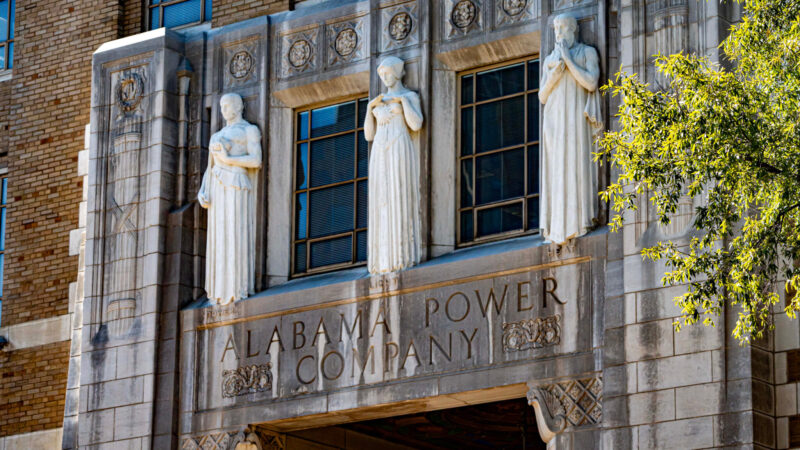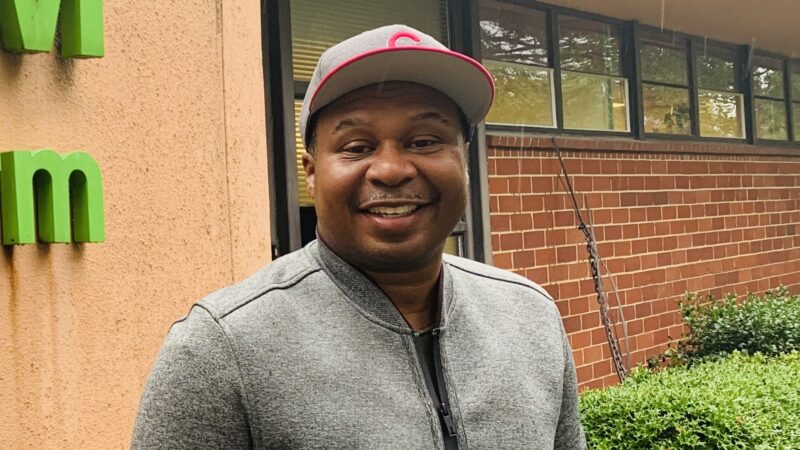The “New” New South
It doesn’t take a PhD to figure out why so many northern blacks are moving back to the Sunbelt. The weather is hot and so is the economy. Companies from other parts of the U.S. and around the world are relocating to the south at a record clip — bringing with them good paying jobs that make it easier for Alabama Governor Bob Riley to sell the south.
“In 1995, there was not a single automobile being produced in the state of Alabama. But today ladies and gentlemen, in less than ten years, there’s over 800-thousand being produced. This is incredible.”
More than 680,000 African-Americans relocated to the South from 1995 to 2000 to work in the new manufacturing plants, open their own businesses or pursue other professional opportunities. For musician and poet Sharrif Simmons it was the lower cost of living and a better quality of life for his 10-year-old son.
“Having access to more room, to just kind of breath and enjoy nature a lot more!”
Simmons himself grew up in Ethiopia and New York City. His aunts owned Harlem’s renowned Liberation Bookstore. When he announced to friends and family last year that he was moving to Birmingham, they balked because of the city’s history of racial unrest.
“But, you know we’re 30, 40 years away from that now. And things are much more surprisingly progressive than certainly a lot of people know in this country. You know it’s as dangerous in New York as it is here. You know I’ve had my fair share of police harassment in New York City, unjustly, completely singled out, complete victim of profiling in a predominately black neighbhorhood. I’ve found that coming here and experiencing it, there?s definitely less tension around personal safety.”/p>
But tension is rising around the migration of African-Americans back to their ancestral homesteads in the south. Most southerners agree that blacks are part of the rich cultural history of the south and deserve their equal place in civic affairs. But there’s growing concern that some elements of the “Old South” are resurfacing at a time when support for affirmative action is weakening nationwide and public schools continue to re-segregate. Marlene Rikard is a history professor at Samford University.
“I think there is that backlash. The south is changing rapidly and southerners often feel challenged or threatened by rapid change.”
And there’s tension within the black community itself, says Rikard’s colleague Jonathan Bass. Bass works with several inner-city African American church groups in Birmingham who feel they’ve been ignored by newly relocated middle class blacks.
“A lot of these african americans feel like they’re returning to the land of their ancestors, but they’re not really willing to return to the life of their ancestors, which was an impoverished class of people, perpetually impoverished, that they were an underclass of Southern society, politically, economically.”
But, as more African-Americans move south, their political force is being felt. Several major southern cities have black mayors and southern states shape presidential politics because, as Samford political scientist Randolph Horn says, it’s hard to win the White House without winning the south.
“It’s mathematically possible, but it’s difficult — so for republicans to win they need to hold the south and for democrats to win they need to break the south.”
How likely is that? There are two competing theories, says Birmingham Southern College political scientist Natalie Davis.
“More minorities attracted to cities, more people being better educated, more women working outside the home and all of that kind of works together and creates a synergy for democrats.”
Davis says the counterview is that rather than seeing the growth of what are called ideopolises — creative places where democrats thrive — the south may see more micro-polises.
“These are areas that are somewhat outside of cities, where a major organization, let’s say a FedEx or UPS locates, creates a kind of community of its own — very much attached to community, to church.. and that bodes well for republicans.”
Politics aside — better jobs, safer neighborhoods and warmer weather seem the trifecta for those betting on whether cities like Atlanta, Memphis, and Birmingham continue to see a steady migration of black, white, brown and other.
How Alabama Power kept bills up and opposition out to become one of the most powerful utilities in the country
In one of the poorest states in America, the local utility earns massive profits producing dirty energy with almost no pushback from state regulators.
No more Elmo? APT could cut ties with PBS
The board that oversees Alabama Public Television is considering disaffiliating from PBS, ending a 55-year relationship.
Nonprofit erases millions in medical debt across Gulf South, says it’s ‘Band-Aid’ for real issue
Undue Medical Debt has paid off more than $299 million in medical debts in Alabama. Now, the nonprofit warns that the issue could soon get worse.
Roy Wood Jr. on his father, his son and his new book
Actor, comedian and writer Roy Wood Jr. is out with a new book -- "The Man of Many Fathers: Life Lessons Disguised as a Memoir." He writes about his experience growing up in Birmingham, losing his dad as a teenager and all the lessons he learned from various father figures throughout his career.
Auburn fires coach Hugh Freeze following 12th loss in his last 15 SEC games
The 56-year-old Freeze failed to fix Auburn’s offensive issues in three years on the Plains, scoring 24 or fewer points in 17 of his 22 league games. He also ended up on the wrong end of too many close matchups, including twice this season thanks partly to questionable calls.
In a ‘disheartening’ era, the nation’s former top mining regulator speaks out
Joe Pizarchik, who led the federal Office of Surface Mining Reclamation and Enforcement from 2009 to 2017, says Alabama’s move in the wake of a fatal 2024 home explosion increases risks to residents living atop “gassy” coal mines.








